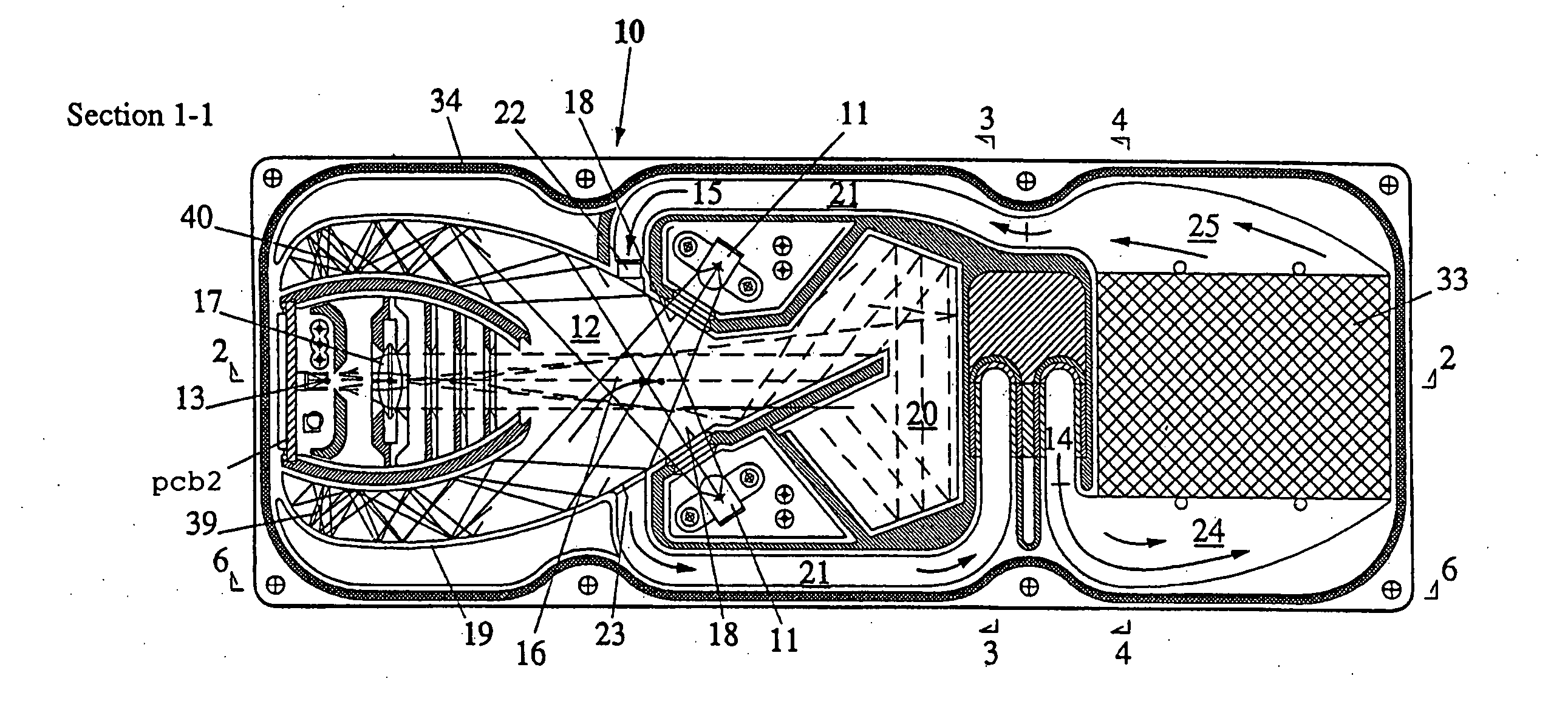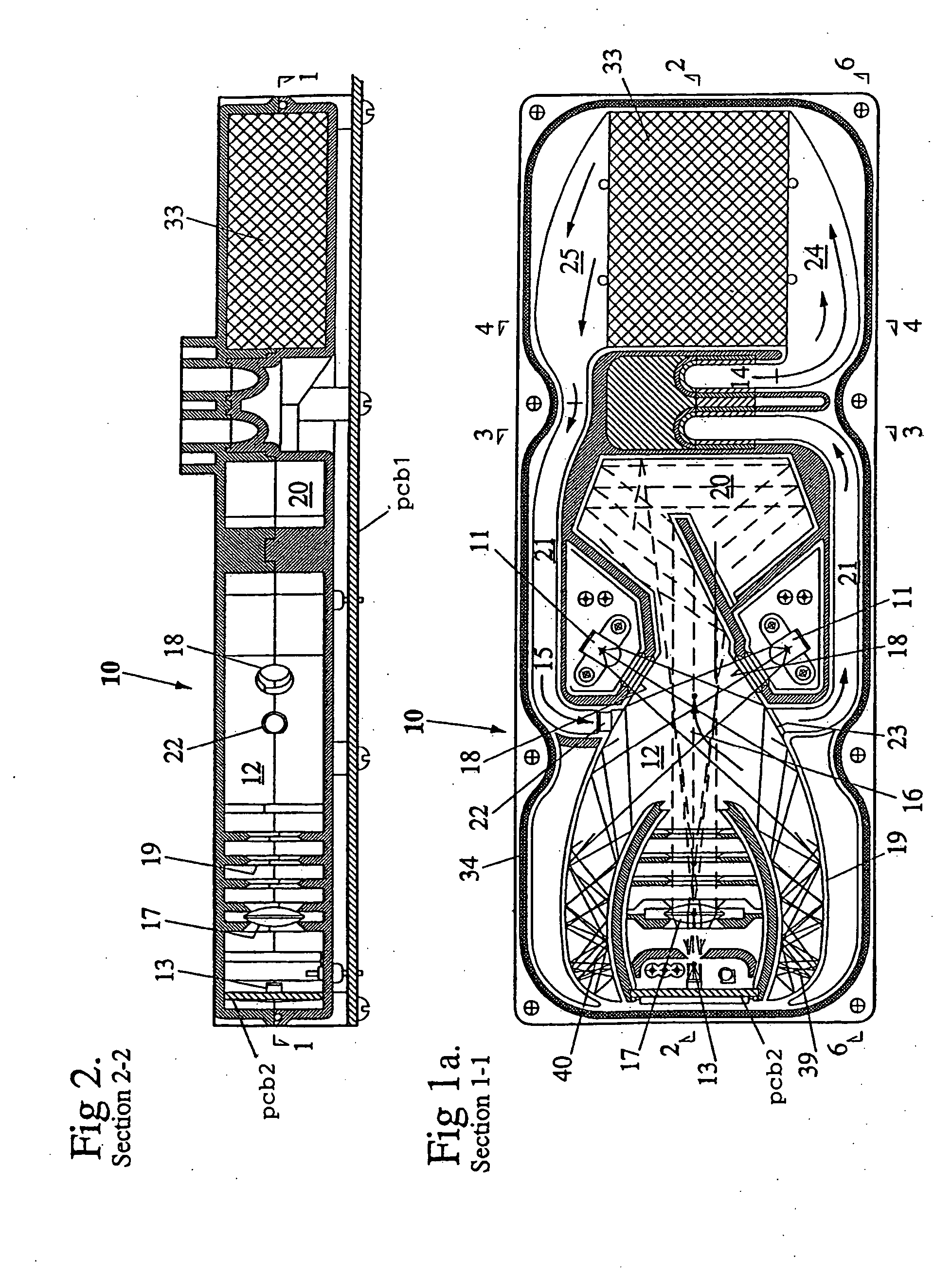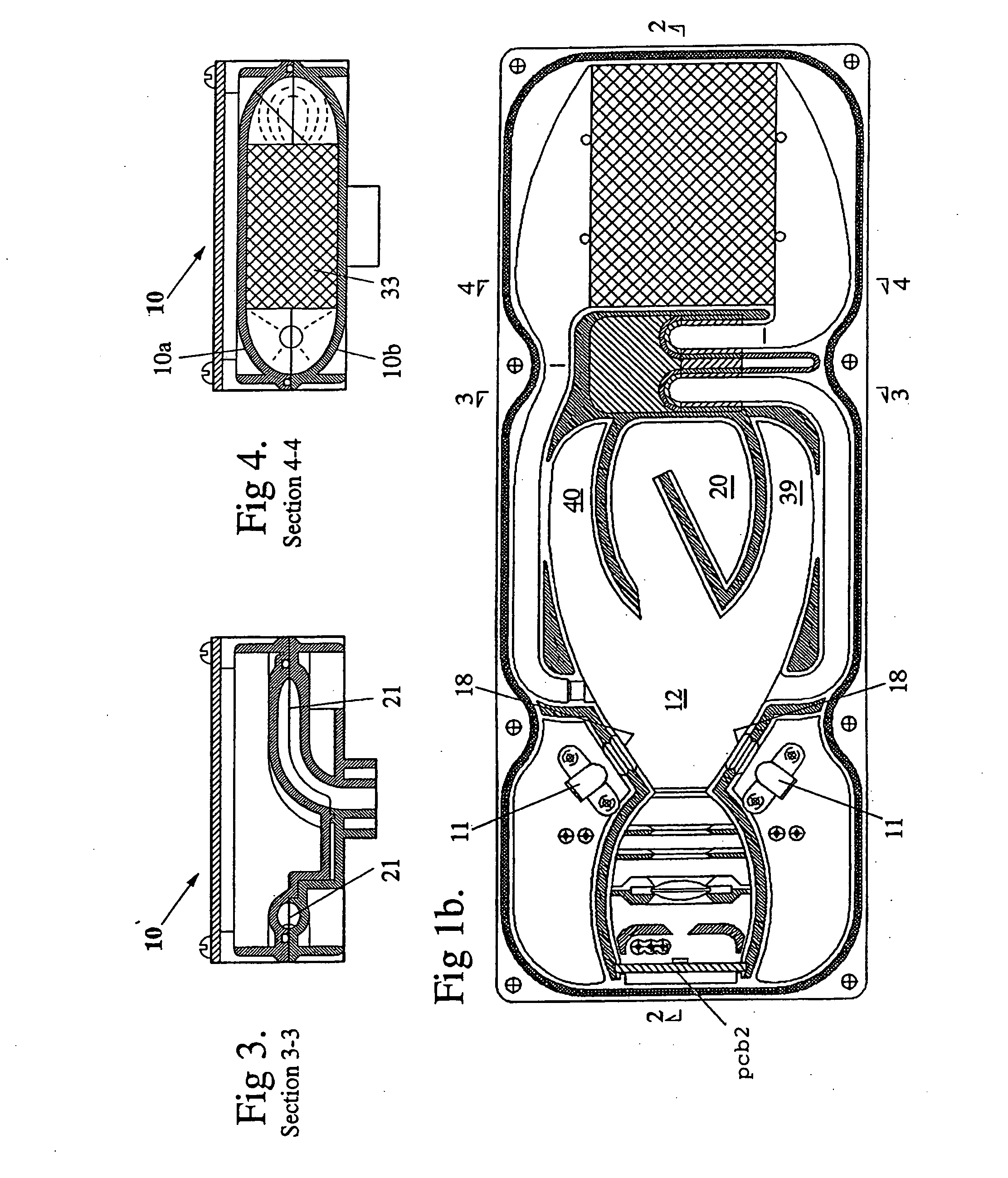Smoke detectors particularly ducted smoke detectors
a detector and smoke detector technology, applied in the field of particles detection, can solve the problems of insufficient sensitivity of detectors to provide warnings, insufficient sensitivity of detectors to prevent clogging of passages or soiling of optical surfaces, and achieve the effect of small siz
- Summary
- Abstract
- Description
- Claims
- Application Information
AI Technical Summary
Benefits of technology
Problems solved by technology
Method used
Image
Examples
Embodiment Construction
[0097] In general terms, the present invention seeks to detect airborne particles and / or to provide discrimination according to particle size using apparatus that has low cost, small size, low weight, high ruggedness, high reliability, low maintenance and long service life, and is suitable for high production volumes. This is achieved with the use of only a single sensor, together with at least two inexpensive light sources. Use of a single sensor and its associated electronic amplifier necessarily designed for high sensitivity with low noise, simplifies the design and reduces the cost of the system. It also avoids any lack of consistency that could occur in the sensitivity and linearity of additional sensors and it avoids the possibility of the incremental addition of noise contributions from plural sensors.
[0098] Discrimination of airborne particle size could be achieved in a number of ways. The two or more light sources may differ in wavelength, polarization, position (specifica...
PUM
| Property | Measurement | Unit |
|---|---|---|
| wavelengths | aaaaa | aaaaa |
| wavelengths | aaaaa | aaaaa |
| wavelengths | aaaaa | aaaaa |
Abstract
Description
Claims
Application Information
 Login to View More
Login to View More - R&D
- Intellectual Property
- Life Sciences
- Materials
- Tech Scout
- Unparalleled Data Quality
- Higher Quality Content
- 60% Fewer Hallucinations
Browse by: Latest US Patents, China's latest patents, Technical Efficacy Thesaurus, Application Domain, Technology Topic, Popular Technical Reports.
© 2025 PatSnap. All rights reserved.Legal|Privacy policy|Modern Slavery Act Transparency Statement|Sitemap|About US| Contact US: help@patsnap.com



